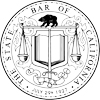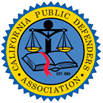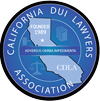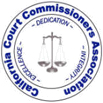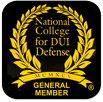Overview of V.C. 23103
The elements of V.C. 23103 are:
- The Defendant drove a vehicle upon a street or highway.
- Defendant did so with an intentional or conscious disregard for the safety of persons or property.
Actual Case No.
John, a college student, decided to have some fun with a couple of his roommates. Late at night, they went to the parking lot of a nearby shopping center and decided to play “popcorn” in the bed of John’s pickup truck. John’s two friends got in the bed of the pickup and John raced around the parking lot at high speeds, doing wheelies, bouncing his friends up and down and throwing them to the side. The University police stopped John and cited him for reckless driving in that he could have caused serious injury to his friends. I was able to explain to the D.A. the harmless nature of the activities and I was able to convince the D.A. to reduce the charges to a simple traffic infraction for which John did traffic school. As a result, John did not receive any points on his driving record.
Actual Case No. 2
It was 3 a.m. and Sam was driving on an interstate freeway. Sam ran his car up to 95 miles per hour and made a couple of rapid lane changes. An officer spotted Sam, pulled him over and cited him for reckless driving. I was able to convince the D.A. that since it was the early morning hours and there was no proof that there were other motorists on the freeway that the speed itself did not necessarily endanger others. As a result, I was able to convince the D.A. to reduce the charge to simple speeding.
Examples of Reckless Driving
Pete, in a hurry to get to the store, drove his car at a speed of 70 miles per hour in a 40 mile per hour speed zone. On his way, he came up quickly behind another vehicle and tailgated it before pulling around the vehicle to the left and passing it on the wrong side of the roadway. Upon being apprehended by the police, Pete was charged with reckless driving.
Penalties for Violation of V.C. 23103, 23104, and 23105
V.C. 23103 carries a penalty of a maximum of 90 days in the county jail. However, reckless driving causing injury, V.C. 23104, though still a misdemeanor, carries a sentence of up to 6 months in the county jail. Finally, a violation of V.C. Section 23105, reckless driving causing serious bodily injury, is a felony with a sentence of up to three years in the State Prison. (Notably, serious bodily injury is defined as a loss of consciousness, a bone fracture, concussion, a wound requiring extensive suturing, etc.) Additionally, if someone drives recklessly causing bodily injury and has a prior reckless driving offense, the act can be charged as a felony.
Common Defenses for Reckless Driving
- The driving did not endanger anyone. For example, if someone has been driving 90 miles per hour and clearly speeding, but the driving was on a freeway in the early morning hours so no one was around, the defendant may be able to successfully argue that the driving did not endanger anyone else. In that situation, the driver’s actions may be a violation of V.C. 22349, exceeding the maximum speed law, but not a violation of reckless driving.
- The driver did not act intentionally or with a conscious disregard for safety. If a driver’s vehicle or the road conditions caused him to behave unexpectedly or erratically, this may not actually qualify as reckless driving. Indeed, in those situations, the driver most likely could successfully demonstrate that it was the vehicle or the road conditions that caused him to drive “recklessly.”
ENGAGING IN A SPEED CONTEST – CALIFORNIA VEHICLE CODE SECTION 23109
Overview of V.C. 23109
To prove that the defendant is guilty of engaging in a speed contest, the prosecution must show that:
- The defendant drove a motor vehicle on a highway, AND
- While so driving, the defendant willfully engaged in a speed contest.
Highway refers to any area that is publicly maintained and open to the public for purposes of vehicular travel (including streets).
Willfully means that the defendant acted willingly or on purpose.
Engages in a speed contest means that the defendant used a vehicle to race against another vehicle, a clock, or other timing device.
Examples of Engaging in a Speed Contest
After purchasing a new car, Isabelle is excited to see how fast it can go. While driving home from the dealership, Isabelle notices another driver trying to pass her on the highway. Eager to test out her new car, she speeds up and races the other vehicle for several minutes, until she is pulled over by a police officer. Though Isabelle truthfully tries to explain to the officer that she didn’t even realize racing was against the law, the officer correctly tickets her for engaging in a speed contest. Because Isabelle intentionally raced another vehicle on a highway, she can be charged with engaging in a speed contest even if she didn’t intend to break the law.
Alex is driving on some back roads in a rural area when he decides to see if he can beat his old racing record. After carefully looking around to ensure that the road is empty, Alex sets his timer and begins to race. Several minutes later, Alex spots an approaching car and slows down so as to be safe. Even though Alex attempted to take some safety precautions, he still engaged in a race against his timer on roads that are publicly maintained and open to the public. As such, he can be charged with engaging in a speed contest.
Penalties for Violation of V.C. 23109
Basic Penalties:
If convicted of Vehicle Code section 23109, an individual may face any of the following penalties:
- Imprisonment in a county jail for a duration lasting between 24 hours and 90 days;
- Paying a fine between $355 and $1,000;
- Perform 40 hours of community service;
- Possible driving suspension lasting between 90 days and 6 months; and/or
- Vehicle impoundment for up to 30 days.
Enhanced Penalties:
If a defendant causes a bodily injury or has a prior conviction under V.C. section 23109, the above penalties can be enhanced or increased. Specifically, these enhancements increase both the jail time and the fined amount.
Common Defenses for Engaging in a Speed Contest
Common defenses include:
- The defendant was simply speeding, not engaging in a speed contest. In such a situation, the defendant would need to establish that she was not racing against another person or timing device, but instead was simply driving above the speed limit.
- The defendant was not acting willfully. In order to successfully use this defense, the defendant would need to demonstrate that he did not act willingly or purposely. This defense is commonly used in situations when a defendant was speeding for safety reasons.
EXHIBITION OF SPEED – CALIFORNIA VEHICLE CODE SECTION 23109(c)
Actual Case
Bill revved his engine and accelerated rapidly from a parking lot onto the street. The sudden acceleration caused the squealing of tires. It had been raining and there was water pooled in the area where Bill exited the parking lot. I was able to convince the District Attorney that it was the wet conditions that caused the tires to chirp, and I was able to get the charges reduced to a simple infraction for starting unsafely. Bill was able to go to traffic school and keep the point off his record. The end result was that Bill’s insurance rates did not increase.
Overview of V.C. 23109(c)
The elements of engaging in an exhibition of speed are:
- The defendant drove a motor vehicle on a highway, AND
- While so driving, the defendant willfully engaged in an exhibition of speed.
Highway refers to any area that is publicly maintained and open to the public for purposes of vehicular travel (including streets).
Willfully means that the defendant acted willingly or on purpose.
Engages in an exhibition of speed means that the defendant accelerated or drove at a speed that is dangerous and unsafe in order to show off or make an impression on someone else.
Examples of Engaging in an Exhibition of Speed
One sunny afternoon, Elizabeth invites her friend Aaron to go for a ride on her new motorcycle with her. Elizabeth begins the drive by carefully traveling through their small town at a reasonable speed. However, upon hearing Aaron shout some encouragement from behind her, Elizabeth decides to speed up. Hoping to impress Aaron, she zips through a school zone going about 65 miles per hour. Though Elizabeth avoids crashing into any children, she can still be charged with engaging in an exhibition of speed because she intentionally drove at an unsafe speed on a public road in order to impress Aaron.
One evening, Marc stops his car at a red light and glances to his left, where another car is also waiting for the light to change. Upon closer inspection, Marc realizes that the driver is his favorite basketball player. Eager to show off for his idol, Marc quickly accelerates his car as soon as the light turns green. In order to ensure that the basketball star is paying attention, Marc begins honking his horn, and then accelerates up to 75 miles per hour, despite driving on city streets. When Marc is inevitably pulled over by an officer, he will be charged with engaging in an exhibition of speed since he accelerated to an unsafe speed on a city street with the intention of impressing his basketball hero.
Penalties for Violation of V.C. 23109(c)
If convicted of Vehicle Code section 23109(c), an individual may face the following penalties:
- Imprisonment in a county jail up to 90 days; and/or
- Paying a fine up to $500.
Common Defenses for Engaging in an Exhibition of Speed
Common defenses include:
- The defendant was not driving at an unsafe or dangerous speed. Even if the defendant did accelerate or drive at a high speed to impress someone, he can still try to demonstrate that he was actually driving at a safe speed. If successful, he will be able to avoid being convicted under V.C. 23109(c) since engaging in an exhibition of speed requires that the defendant drive at an unsafe or dangerous speed.
- The defendant was not acting willfully. In order to successfully use this defense, the defendant would need to demonstrate that he did not act willingly or purposely. This defense is commonly used in situations when a defendant was speeding for safety reasons.
HOW WE CAN HELP
I have been practicing criminal defense for over 35 years. I have represented people on hundreds of traffic violation cases and have a proven record of success. I will begin by combing the police reports for any helpful information and inconsistencies and then will meet with you to discuss your side of the story and to determine possible defenses. I employ a team of investigators, legal researchers, and expert witnesses that will help present the strongest possible case. Often, in their attempt to find someone responsible for a crime the police will arrest the wrong person. Sometimes the police will take an innocent situation and charge someone with a crime. I served for over sixteen years as a Judicial Officer of the Sacramento Superior Court and have established key relationships that can be used to greatly benefit my clients. I will aggressively fight for you to get you the best possible result on your assault case including taking the case to trial if needed. Call our criminal lawyer at (916) 779-3500 or email us at Contact@foosgavinlaw.com for a no-cost initial consultation.

